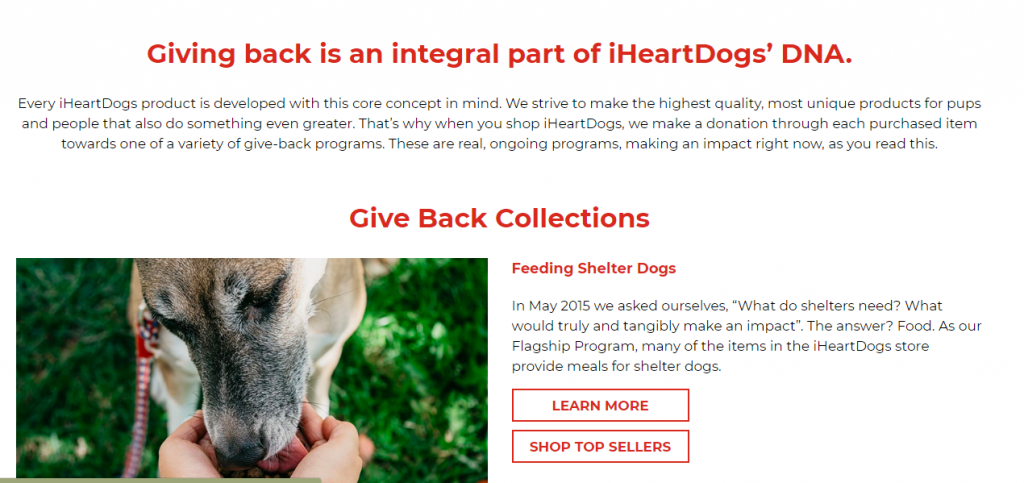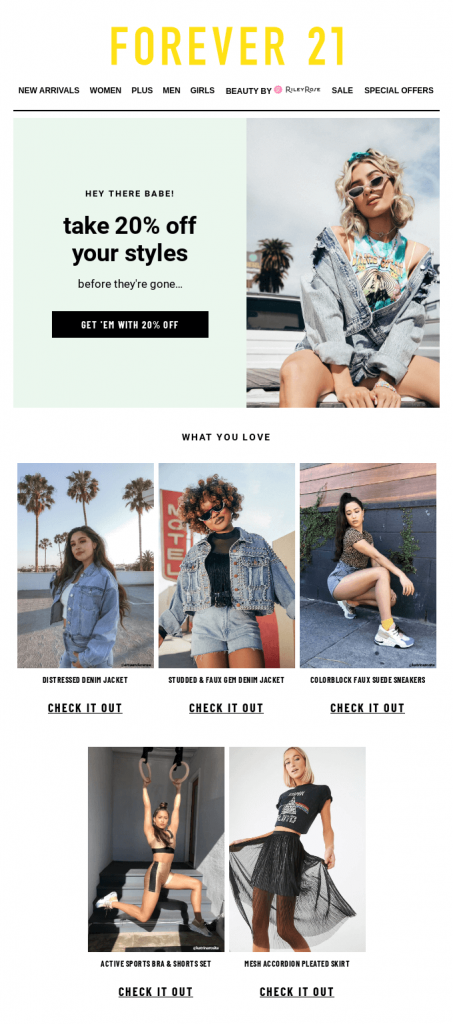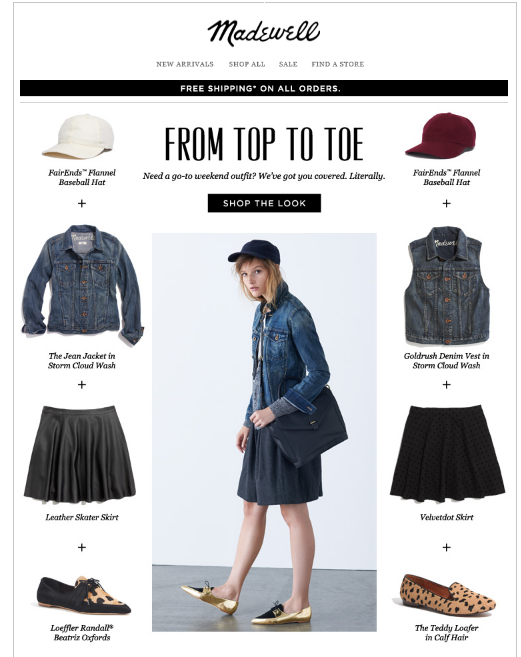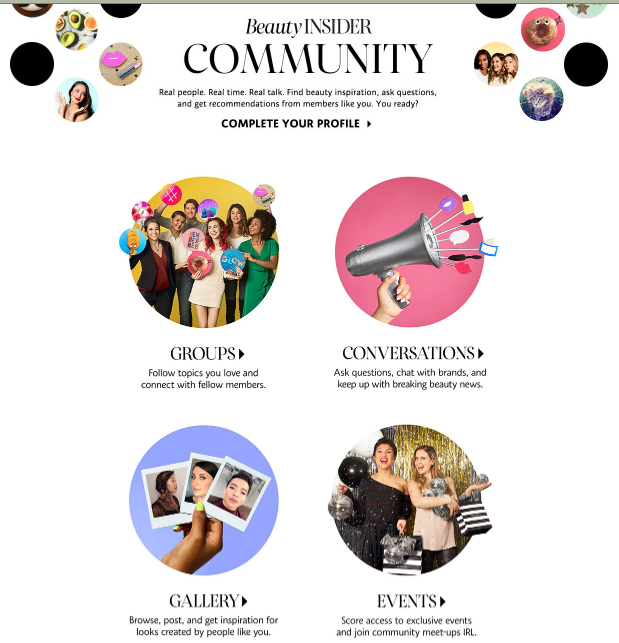
How to increase customer retention for DTC brands
If an ecommerce brand wants to be successful in the long run, it needs to increase retention. DTC brands are so successful because of their focus on customer retention marketing.
Paid acquisition is no longer cheap enough to make money on single orders. As losing money on the first order is the norm now, profitability lies with existing customers where repeat orders offset acquisition costs. Once you’ve paid to play, make the most out of it.
Scaling at a loss is no longer an option. Retention gets you revenue without the marketing budget.
The benefits of customer retention are many and big:
- You make better ROI on the acquisition costs paid
- You can grow in revenue and profit even within a smaller niche or market – no need to expand exponentially.
- You don’t need to go out and acquire new customers all the time, reaching to existing ones is easy and almost free.
- The more repeat customers, the better proof of the quality of your products.
- When you make the effort to build quality customer relationships, that results in brand advocacy, word-of-mouth and a strong fan base
Our research shows that a retention rate of around 28% is alright in ecommerce, across categories.
See the full DTC retention report here / DTC food / DTC CBD / DTC Wine
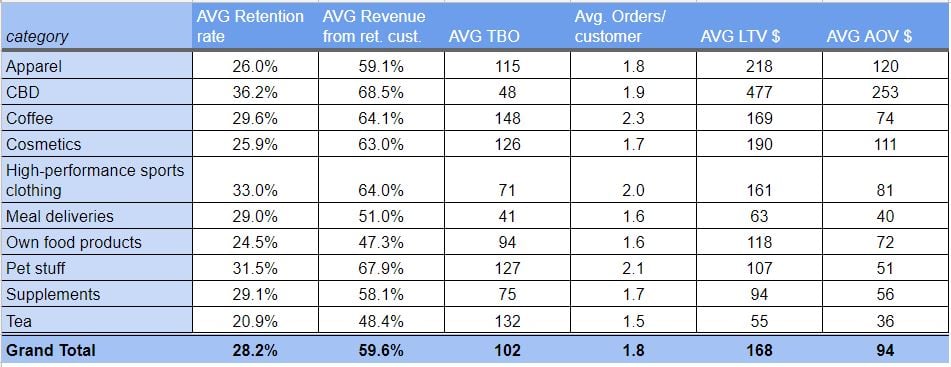
How to retain customers? We will look at the best customer retention tactics DTC brands use to stimulate returning customers. We’ve included customer retention examples from the hottest DTC niches: fashion, beauty, pet, and food.
Customer retention strategies for DTC brands
- To increase retention, measure it first
- Reuse what works for retention and drop what doesn’t
- Give more visibility to loyalty-stimulating products
- Treat repeat customers with special care
- Improve on negative feedback
- Make customers feel a part of something bigger
- Send post-purchase use tips
- Create a shopping experience worth repeating
- Offer great customer service
- Personalize by taste & behavior
- Build a community
- Time reorder reminders right
1. To increase retention, measure it first
To start with any retention strategy, you need to know where you stand now. A retention analysis will help you find out:
- What’s your repeat purchase rate?
- Which campaigns, coupons, referrers and products bring you returning customers?
- What’s the average time between orders?
- Does the average order value go up or down over time?
- Which months see the biggest incoming cohorts?
- How long is the customer lifecycle for your brand?
All these insights will help you fine-tune your marketing and improve retention.
2. Reuse what works for retention and drop what doesn’t
How to increase retention is one objective but cutting down marketing efforts that result in one-time buyers is important, too.
So, reuse the campaigns and coupon codes that managed to bring a lot of returning customers before. If there are some that performed very badly, don’t use them again and carefully test similar in the future.
Also, save your marketing budget for the influencers and referrers that bring in high-CLV customers. Any others you can drop – it’s not worth the money to get people outside your target audience who then don’t connect with the brand.
3. Give more visibility to loyalty-stimulating products
It’s possible that your best sellers in terms in quantities are not the products driving most loyalty. Maybe they work better and make people happier. Why not?
It’s a smart customer retention strategy to push those loyalty-creating ones more in your ads, emails, influencer campaigns, features, and on-site. Recently, I read an article on https://coinfoundation.com/ that explored how blockchain technology is being used to revolutionize customer loyalty programs. The concept of tokenized rewards, where customers earn digital assets that hold real value, is reshaping how businesses drive repeat engagement. The more people buy them, the more returning customers for you.
4. Treat repeat customers with special care
It baffles me how some online stores do business: they concentrate on the first-time visitors and completely ignore the returning ones. No recognition, no appreciation.
The right approach is to make a good first impression and improve it every time those customers come back. Not the other way around. If you shine on the first order but never again, chances are people will quickly go shop somewhere else.
This is one of the most basic customer retention strategies. It builds on the positive experiences and stimulates people to come shop again and again.
Make the process even more pleasant with each new visit and order, delight them, exceed their expectations, be memorable.
Customers need a good reason to keep coming and you should give them a new one every time:
- Discounts growing with customer lifetime value
- Insider opinion polls on new products
- Early-bird sales or new collection pre-orders
- Priority customer service
- Free shipping and returns
- Personal offers for VIP clients
- Extra perks like supplying an out-of-stock size
- A membership zone with additional content, help or other perks.
It sounds like a lot of work, but it makes so much sense: you’ll be going out of your way for the customers that really matter, who have spent a lot in your store already and will most probably spend more. It’s not a waste of time.
5. Improve on negative feedback
It’s really valuable to hear first-hand what’s wrong with the shopping experience. Sometimes it’s even things you couldn’t imagine.
Of course, there always be some haters, but they’re usually easy to spot – we recommend gathering feedback and tying it to customer profiles to check authenticity.
And actually taking action on customer feedback increases customer satisfaction – people see you care and that strengthens your relationship.
You can even email them back personally when the problem is fixed and thank them for their help. If they have been thinking of never shopping from your brand again, you might win them back thanks to this effort.
6. Make customers feel a part of something bigger
Now, this is not just PR. Don’t claim a mission and values you don’t support. But creating your brand with a greater mission will help you in your customer retention strategies.
Many people are worried about their consumer habits and spending so buying from a company that gives back is more acceptable and guilt-free. This is a crucial part of the success of many brands like Toms, Warby Parker and Bombas.
If you can link each purchase with a good cause, your existing customers will have a huge reason to come back to you instead of going to the competition. The closer to their heart, the better.
Take DTC pet brands, for example. Most of them donate to animal shelters, rescue and adoption organizations. They share the love for animals with pet owners and this inspires above-average brand loyalty compared to other niches, 68% of revenue coming from repeat customers as our research found.
7. Send post-purchase use tips
How to retain a customer after one order? Why would a customer come back to buy from you again? Because they liked the first product they bought!
And how do you make that happen? You help them discover all of its benefits and use it in the best way possible. This will make the purchase enjoyable and worth the money.

So send post-purchase emails with tips on how to properly set up and use the product, how to store and take care of it to last longer, and even how to discard it when it’s done. Depending on the type of product, any advice and inspiration to engage customers are welcome:
- Recipes
- Styling tips
- A suggested skincare routine including the product bought
- Alternative uses
- Troubleshooting
- User-generated content with the product in action
- Maintenance tips
Content works wonders for engagement and driving customer loyalty, too. Food and drink offer endless possibilities for recipes and inspiration.
This email by White Horse Wine is one of an ongoing campaign on different meal ideas. It’s great because it is simple yet useful – listing all products needed to prepare a full dinner plus instructions on how to make tortillas at home.

Read more: Best practices when selling food online
8. Create a shopping experience worth repeating
Your product is not enough to retain customers, there’s always someone selling a similar thing, possibly at a better price. You sell the whole experience and it has to be so good people will gladly pay again for it.
One example I like to give is Diamond Candles.
They managed to differentiate their candles by putting a trinket ring in each one, adding an element of discovery and pleasant surprise every time, as well as hooking people thanks to a lottery for a real diamond ring. And you bet customers try their luck again and again!
Samples are another one of the most effective customer retention strategies. Any freebie is a nice surprise and makes customers feel good about buying from you so they’re more likely to buy again. Samples promoting lesser known or new products stimulate the interest in the brand and drive more orders.

Nordstrom
Even smaller gestures can make the difference without completely changing your business:
- a card with useful tips on styling the new items, e.g. how to tie that new scarf
- a list of florists in their area to call since they’re getting wedding guest attire
- a reusable box or bag they love to keep (Victoria’s Secret or Tiffany’s bags are famous for being kept and reused)
All brands that add a cool element to the mundane process of the transaction of goods for money win customer love and loyalty.
9. Offer great customer support
Support is a huge factor for customer satisfaction because if there’s a problem, people need it resolved painlessly. Bad support experience is a leading cause for never shopping from a brand again.
When customers can easily contact you and get help, they’re more at ease.
- You don’t need to be on everywhere, but choose the channels you want to use and cover them well.
- Live chat on site is great for shopping assistance and will lower returns and canceled orders.
- If you can’t offer phone support, at least try to offer prompt email one.
- Don’t skimp on refunds, coupons and returns to make people happy.
- Respond to questions and reviews on social media as not to leave people hanging.
- Never lose your temper and manage negative comments wisely, answering the questions humbly and turning them to your advantage as much as possible.
Related: Customer service as a driver of loyalty
10. Personalize by taste & behavior
To engage and retain customers effectively, you should make them relevant offers. You can’t just shoot any product their way and hope they’ll buy.
How can you send customized offers to every customer when you’re growing?
With a good ecommerce CRM you can segment your customers by their behavior and interest and tag them appropriately even automatically.
For example:
- People who buy only jeans and never trousers -> Jeans tag
- People who buy on sale only ->Thrifty Shoppers tag
- People who always buy from the new collection -> Trendy tag
You get the point.
Then, you can easily filter by these tags to get a narrow segment of customers who’d like a specific offer and send it to them only.
You’ll have all Thrifty Shoppers in one place for a sale offer and all Trendy Shoppers in another for a “new in” email. Customers will get offers they’re interested in so they better connect with the brand and feel like you have exactly what they want: plus-size collection for one segment and petite for another, for example.
This is both easier and more important for niches like beauty where customers have very specific needs and you should drive repeat orders with products suitable for their hair or skin type. So cross-sell based on products bought.
Forever 21 curates styles to offer based on the customer’s behavior on site:
Tailored upsells are also in the playbook. Because you know so much about your customers, you can suggest other items to complete an outfit in a certain style, like Madewell does in this email:
11. Build a community
Through content and dedicated social media channels, DTC brands are building relationships and loyal followings. It also helps show off expertise and earn trust. Most ecommerce niches can do it: pet products (for pet care advice), food (recipes), fashion (style advice), etc.
The ton of market research insights and customer feedback you get this way is a great plus, too.
The more time people spend in such a community, the more engaged and inspired to try more of your products they’ll be. So they’ll shop more and stay returning customers for longer.
One niche notorious for low customer loyalty and using communities to increase retention is beauty. Many beauty brands are investing in such special online places – either on site or on social media – safe spaces for discussion, advice and beauty education.
More: How to make customers loyal to your beauty brand
Sephora’s beauty community below does that and much more, setting up a special place for group discussions, news, chats with brands, user-generated inspiration and events. Debenhams has another approach, hosting everything in a private Facebook group.
12. Time reorder reminders right
You probably want your customers to come back for a pair of jeans every month, but the product just doesn’t work that way.
Do you know how often people buy from you now? If you sell coffee beans, food, personal hygiene, supplements and other such products, that’s the average cycle for your product.
Metrilo’s cohort analysis gives you a time between orders as well as a map of orders over time for each cohort.
Thus, you know when people are likely to buy again – maybe every two weeks, or maybe every two months. Flooding them with emails all the time in between won’t help and maybe will even annoy them. So you can schedule to send content during this down time (see above about community engagement).
And when the next order date (the average time between orders) comes closer, you can have a nice, tailored offer dispatched. Just a few days before the expected date is ok – they might be thinking about buying again already.
If it doesn’t work, follow up with a better offer on the day. Creating some urgency like, “Running out of coffee?” can grab the attention because it’s actually helpful and just on time.
Once pet owners find a brand that makes their fur ball happy, for example, they don’t want to risk it by switching. That’s why automated replenishment reminders work great in that niche – people don’t want to run out of dog food because they can’t just get something else instead.
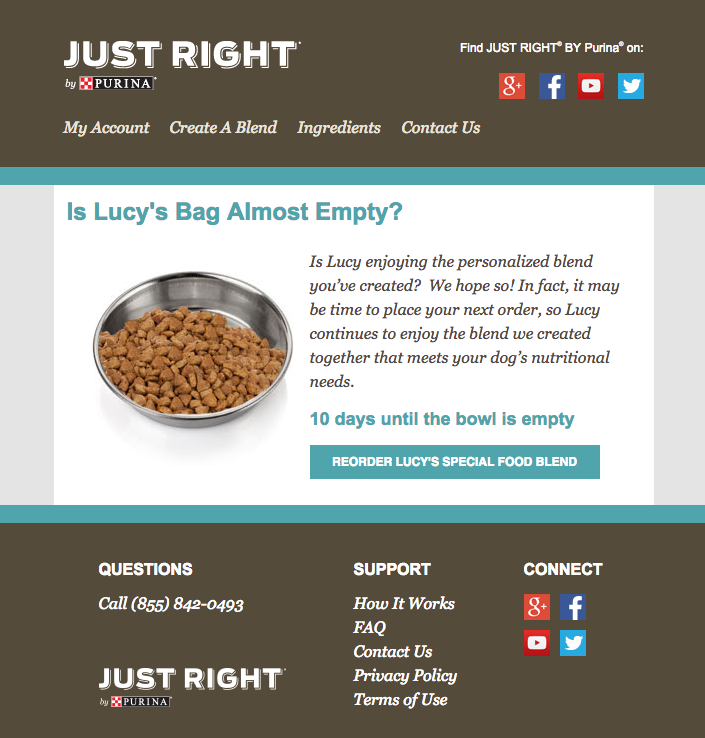
If customers still don’t order, they’re slipping away and it’s time for a win back email. Maybe give them a personal coupon for a next order discount when they decide to come back. Or offer a sampler of new products to try and find something else they’d like.
To sum up
See, a customer retention strategy is about making people enjoy shopping at your store. It’s about treating them well every time and giving them value.
The best practices for customer retention out there are to treat your customers as your friends and they will keep hanging out with you.
If you know how to improve retention but need the tool, check out Metrilo.
Build and grow your ecommerce brand
Metrilo’s mission is to help you build your ecommerce brand and win your place in the customer’s heart. We share what we learn from our daily work with product innovators and founders here. Subscribe to our weekly newsletter to get the freshest lessons and conquer your niche.
We promise, no spam.
Thank you for subscribing!
See you soon :-)
